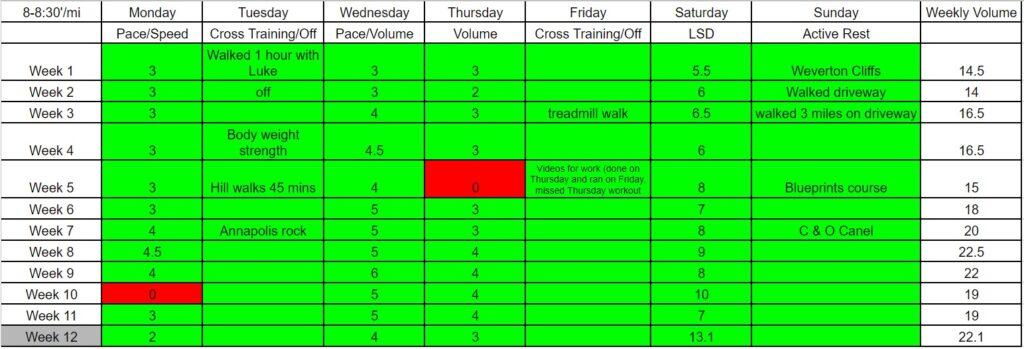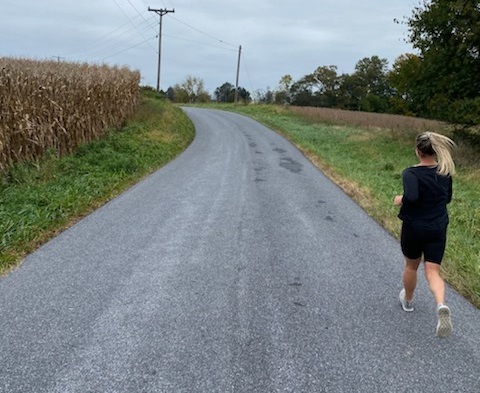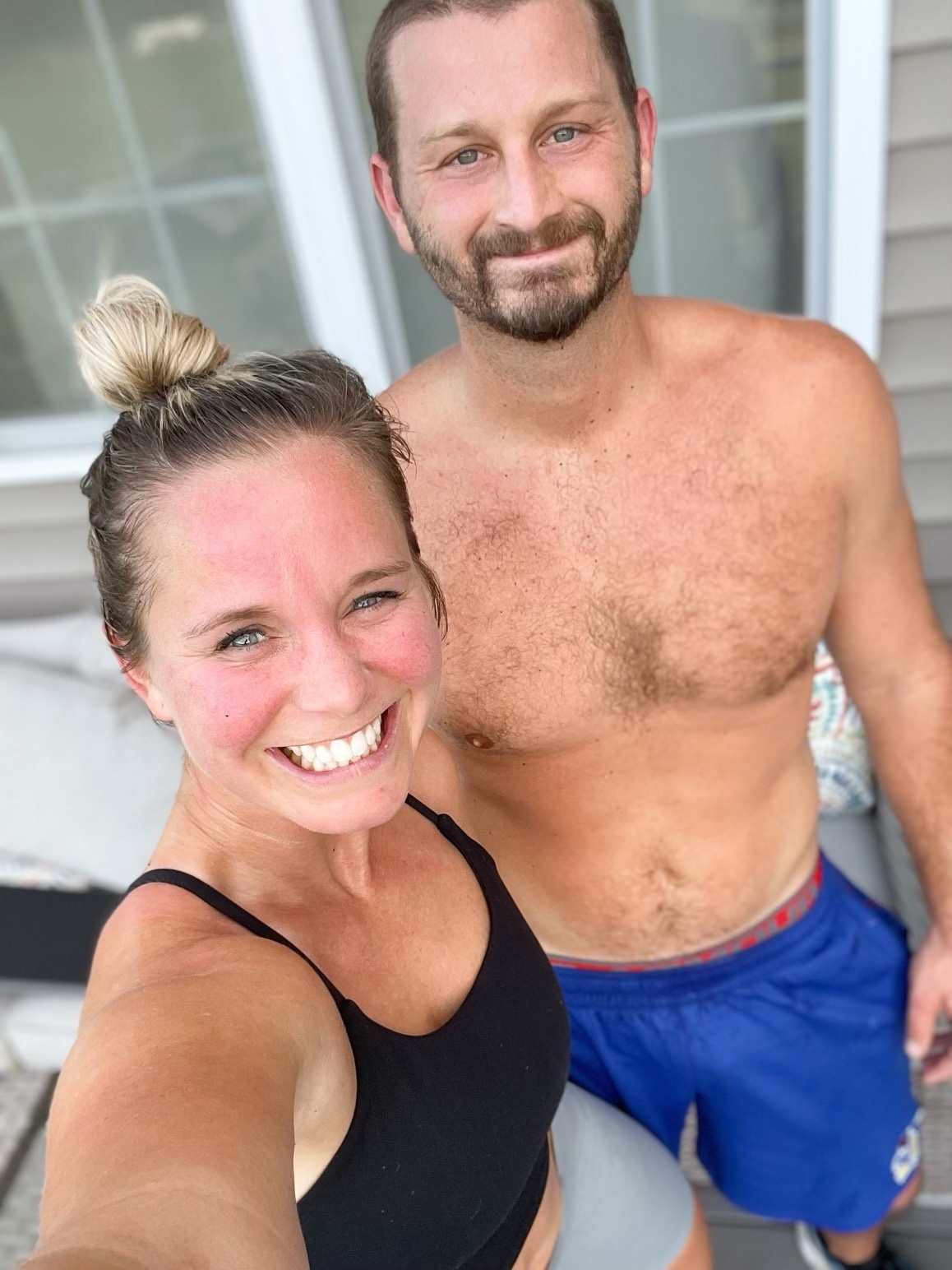My Half Marathon Training Program
One of the reasons I chose to do a half marathon was to push myself out of my comfort zone from a training standpoint. 13+ miles is not something I could just roll out of bed and do without any training. At least, it wasn’t something I could effectively or safely without any training. My undergrad degree is in Exercise Science, I have a Doctorate in Physical Therapy, I am a Board Certified Sports Clinical Specialist and I have been certified as a Strength and Conditioning Specialist. I have spent 10+ years creating, analyzing and modifying programs for individuals, groups and teams of all ages and abilities. But, one thing I am not good at is creating a program for myself. At some point in the process, I always seem to lose objectivity and either become extremely biased or simply misread what I am capable of or should be doing.
When I injured my back last January, I didn’t write my own rehab routine. I had Dr. Ashley Young from our Frederick office write a program for me. It contained all the same exercises I would have given myself, but the clarity, confidence and efficiency you get in having someone else take you through the process is unparalleled. I also knew she would call me out on any BS or excuses as well. The most important part of this, is the level of accountability it creates. Prepping for the half marathon was no different and I asked Dr. Greg Ellis from our Mt. Airy clinic to write a routine for me. He was currently training for a marathon himself, he has a passion for working with endurance athletes and he is one of the more intelligent and well read clinicians I know. He functions like a technician and allows objective data to drive his decision making processes, but is able to appreciate the human element of training and logistical issues that go into it as well.
All training programs will share common elements, but can be modified to any training/skill level, competitive desires and logistical feasibility. For myself, we decided on a 4 day a week running routine with 2 days of cross training and one true rest day. My 2 days of cross training often involved hiking, as I wanted to choose an activity that got me outdoors and on my feet for a long duration of time (just like running), but without the wear and tear of impact of pounding on pavement like running does. I would also do some body weight strength training days for cross training as well. I would highly recommend some form of strength training to be involved during this process. Make it something you enjoy, but be sure to incorporate it. My running days were broken down into 4 different categories.
- A longer mileage day on the weekend that progressively built up towards 13 miles, but was run at a slower pace.
- A shorter mileage day intentionally ran at faster than race pace.
- A medium mileage day ran at slightly below or at race pace.
- A low mileage day done at no particular pace, it meant to simply accumulate more total mileage each week.
Each run serves a purpose and I cannot stress enough to follow the purpose of these runs. If not, you run the risk of training to hard every day and burning yourself out or getting injured. The opposite of that, is if you don’t train with the appropriate volume and intensity you may be sorely disappointed in race day.
We also tracked weekly mileage and “acute to chronic workload”. This looks at how much mileage you accumulated in one week compared to your total training. Keeping this ratio reasonable and consistent was crucial to avoid over/under training and the effects that come with it.
Running programs may vary from 3-6 days of running and the intensity of each run will depend on your running history, experience and competition desires. 4 days was enough for me to make it my primary form of exercise and the distances and mileages were something I could commit to and consistently get done given my family dynamics and schedule. We did lean heavily on extended family for help watching the kids on some days and we also had to invest in a treadmill to get some runs in as it got darker out and we live in an area without sidewalks or street lights to run with.
The next blog of the series will dive into our race day experience and also all that I learned and will implement moving forward to help myself and others in the PT and running community. Hopefully this training program was found to be helpful!
–Dr. Zach Baker, DPT, SCS





